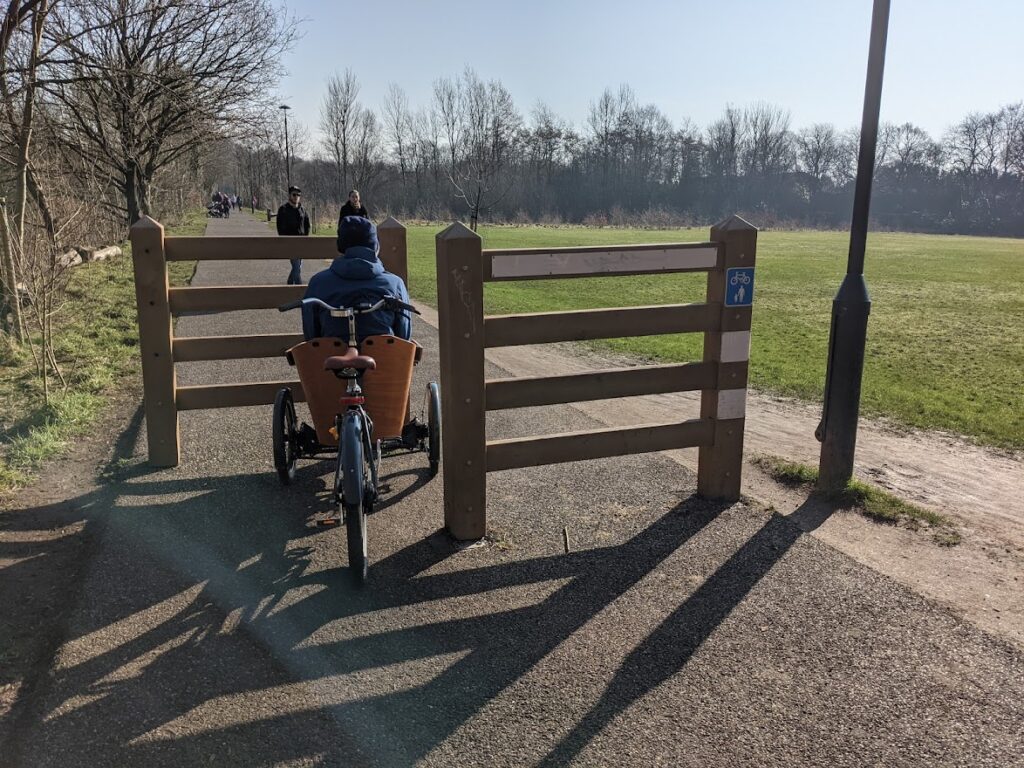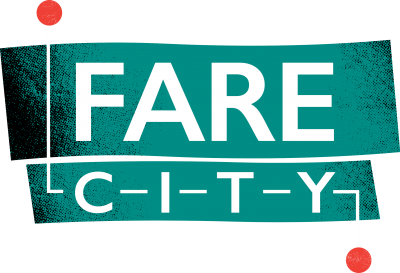Challenging the Barriers to Active Travel
In the second article for our Young Professionals Programme, Manchester-based journalist, Jack Fifield, considers some of the physical and societal barriers preventing more people from walking, wheeling, and cycling.

Physical barriers are commonly installed by UK councils to prohibit access to routes for people using motorised modes, such as scooters and motorbikes. However, these barriers often restrict those walking, wheeling and cycling from using routes at all – especially disabled people, who find themselves having to use more dangerous and polluted alternatives. Barriers act as physical deterrents but, worse still, reinforce societal barriers that directly contravene the Equality Act 2010. Part of the Act – public sector equality duty (PSED) – stipulates that public bodies must not only alter or remove existing physical features that discriminate but must also ensure that new features are accessible to all.
I’m here in Manchester’s Platt Fields Park on a rainy autumn afternoon to meet Harriet Larrington-Spencer – a prominent active travel campaigner – to discuss her experiences of the different barriers to inclusive cycling. I also want to know whether she thinks that a combination of practical and policy initiatives, including those underpinning Manchester’s Bee Network, are enough to break these physical and societal barriers down.
Larrington-Spencer, who goes by the name of Harrie, is accompanied by her cargo trike-riding Cavapoo Frida – herself the star of many of Harrie’s social media videos. In 2017, Harrie was left with reduced mobility in her left arm after being hit by a car driver: “I can use a two-wheeler, but it’s not very safe. I’m very wobbly and it just doesn’t feel comfortable. It reinforces the nerve pain in my arm” As a result, she decided to get a trike adapted to her mobility needs: “I finally got the trike, and it’s great – other than when you come across barriers.”

Just a few weeks before the collision, Harrie went on a trip with friends to cycle the Trans Pennine Trail, where they noticed the prevalence of A-frame barriers. “The idea is that people can still walk through them, and you could still push a bike through them, for example, but [with] anything bigger, you’re not supposed to be able to get through,” Harrie explains. “Before, when we had the two-wheelers, my partner would push my bike through and we could still access those spaces – but now I physically cannot get through.”
Barriers like those found on the Trans Pennine often contravene the Equality Act 2010; however, getting them changed is a bureaucratic slog requiring a complaint from someone who has been affected. “There is a whole process. I got some changed on a shared path because I couldn’t use it [the path] …it’s time-consuming and it’s also emotionally consuming…it’s really, really upsetting if you’re cycling along and you come to a barrier and you know that the barrier is there, it’s like: ‘I’m not cared about in this situation and people don’t think I should be able to access this’.”
Harrie’s experience is not unique, it is shared by many disabled cyclists who see barriers as physical manifestations of wider societal barriers to active travel, including discrimination, exclusionary practices, and a lack of understanding from decision-makers. Some public bodies are better than others, but even in the most progressive of them, issues can often remain.
One of Manchester’s flagship infrastructure projects in recent years has been the ‘Dutch-style’ cycle lane on Oxford Road, but due to its narrowness, Harrie still finds herself using the main road. “I think Oxford Road is good, I just find it a bit daunting on the trike. It’s reasonably wide so I physically fit in there, but my steering, because of my left arm, doesn’t work particularly well.” Overall, however, Harrie thinks progress is being made. “I think the vision of what TfGM [Transport for Greater Manchester] have and what TfGM want is really powerful; it’s just getting councils to implement that and [to] check when they implement things.”

Under the stewardship of Mayor Andy Burnham and Transport Commissioner Chris Boardman, Greater Manchester is attempting to deliver the UK’s most ambitious walking and cycling network as part of the integrated Bee Network transport system. The network will also include the city’s trams, buses, and trains, making it critical that inclusive practices are integrated from the outset if the network is to be truly equitable to the needs of users.
Creating more equitable cities is not only a question of physical access but one of financial access. A 2019 UK government study showed that more affluent households have higher levels of access to a car or van, with only 19% without access in the highest income level versus 45% in the lowest income level. Disabled people are more likely to be on lower incomes than non-disabled people, and almost twice as likely to be out of work. The work of the inclusive cycling charity Wheels for Wellbeing has demonstrated that disabled people can and do cycle, and it has been calling upon the government to not only legally recognise cycles as mobility aids but to provide subsidies to reduce the cost of non-standard cycles.
Harrie’s own electric cargo trike is adapted to her needs, with all the controls positioned on the right-hand side of the handlebars. But at £5,000, these kinds of adapted cycles are difficult for many to afford. “Anything non-standard becomes prohibitively expensive. If you just got a standard trike, you could get them for around £1,000, which is already way more than the equivalent of what you would get for a two-wheeler. For a lot of people, it’s the electric that really assists, especially if you’ve got an illness with a fatigue aspect.”
Wheels for Wellbeing’s Guide to Inclusive Cycling report, shows that over half of the disabled cyclists the charity surveyed receive benefits and they are worried about having these benefits reduced or withdrawn due to being physically active. Over a quarter stated this had deterred them from cycling, while 6% reported that their benefits had been reduced or withdrawn because they declared that they cycled or engaged in physical activity. A lack of awareness regarding inclusive and adapted cycling appears to be part of the reason behind this.
Harrie confirms this had happened to her. “In my Access to Work assessment, I said I cycle as commuting – I even explained that I have an adapted trike and how it was adapted – and the person asked me, ‘Well, if you’ve got nerve damage, how do you cycle?’” I had just explained that, and they still questioned it.” Some of these issues, Harrie told me, could be solved with greater disabled representation in councils and in urban planning. “[Representation] is improving, and there are a lot of organisations that have a lot of influence.” Harrie’s own work as a researcher at the University of Salford is part-funded by TfGM, and it feeds back into improving inclusion for all.

Local Transport Note 1/20 (often referred to as LTN 1/20) is a government document on cycle infrastructure design. Active travel campaigners have praised the document for its detailed recommendations on improving the country’s cycle infrastructure. The guidance does, in fact, include many of Wheels for Wellbeing’s recommendations – showing that the views of disabled cyclists are starting to be not just considered but acted upon.
Harrie considers that “the guidelines are really good and in Greater Manchester, everyone has agreed to adopt them, so all new infrastructure will be LTN 1/20 compliant, and the old infrastructure will eventually be upgraded. It’s expensive and it’s a slow process but there’s a load more money that’s coming in as well. I’m really positive about it, and it gives people a tangible document that they can refer to when things are being planned if they don’t look right.”
There’s still a long way to go for active travel to be truly inclusive in the UK but the foundations are starting to take shape. Public bodies must continue to provide inclusive infrastructure, including wider, obstacle-free routes that are more inviting to use and can empower people to travel actively. Subsidy schemes for those that want to access active travel may encourage those who can ditch the car to switch to more sustainable modes, which will create more room on the road for other road users. Providing the opportunity for all to walk, wheel or cycle leads to a happier and healthier environment for everyone.
Fare City would like to thank Jack Fifield and Harriet Larrington-Spencer for contributing to this piece. Images courtesy of Harriet Larrington-Spencer and Bike is Best. You can find more of Jack’s work here
Fare City’s Young Professionals Programme is a mentorship scheme designed to provide young and early career built environment professionals with a platform to share their work. More information on the programme can be found here










Harrie is an inspiration and this article covers the issues she raises very well – many shared with my own experience in Harrogate and North Yorkshire. There are signs of progress, particularly from the Borough Council but it has been particularly hard work with the County Council that actually has responsibility for most of the existing barriers.
We will get there Harrie! My web site has a section on Where Can I Ride? and does show that your adapted trike should be legally recognised as a mobility aid.